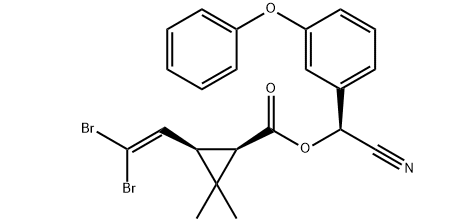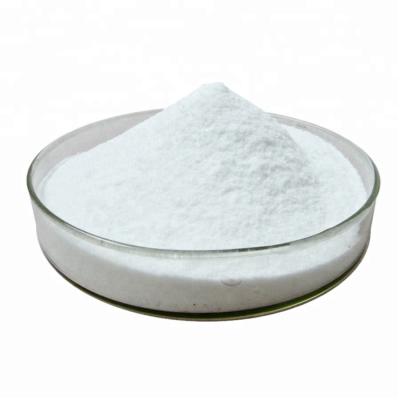The Deltamethrin Pyrethroids Insecticide
Chemical name:
α-cyano-3-phenoxybenzyl [1R-[1α(S*),3α]]-3-(2,2-dibromovinyl)-2,2-dimethylcyclopropanecarboxylate
Molecular formula: C22H19Br2NO3
Structural formula:
Deltamethrin is a pyrethroid composed of a single stereoisomer, of a possible 8 stereoisomers, selectively prepared by using the esterification of (1r,3r)- or cis-2,2-dimethyl-3-(2,2-dibromovinyl)cyclopropanecarboxylic acid with (alpha,s)- or (+)-alpha-cyano-three-phenoxybenzyl alcohol or by way of selective recrystallization of the racemic esters acquired by esterification of the (1r,3r)- or cis-acid with the racemic or (alpha-r, alpha-s, or alpha-r/s)- or + or − alcohol.

Molecular weight: 505.2
CAS No. : 52918-63-5
Specifications:98.5%TC 2.5%EC
Usage:Deltamethrin is a highly effective insecticide. It is used, among other applications, for the production of long-lasting insecticidal nets (LLINs), which, along with indoor residual spraying (IRS), are the main vector control strategies recommended by the World Health Organization (WHO) for the management of malaria.
Deltamethrin plays a key role in controlling malaria vectors, and is used in the manufacture of long-lasting insecticidal mosquito nets. It is used as one of a battery of pyrethroid insecticides in control of malarial vectors, particularly Anopheles gambiae, and whilst being the most employed pyrethroid insecticide, can be used in conjunction with, or as an alternative to, permethrin, cypermethrin and organophosphate-based insecticides, such as malathion and fenthion. Resistance to deltamethrin (and its counterparts) is now extremely widespread and threatens the success of worldwide vector control programmes.
Submitted successfully
We will contact you as soon as possible




